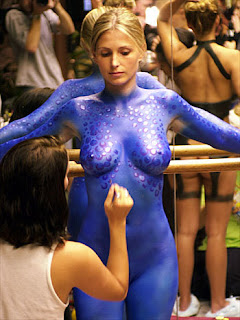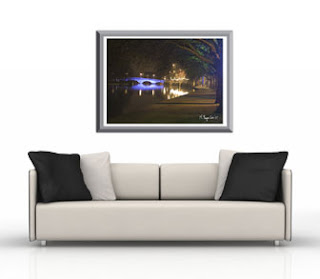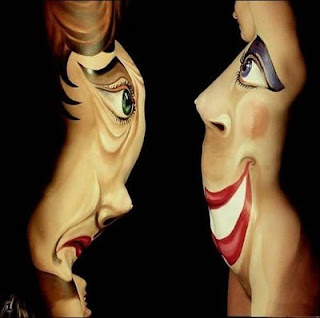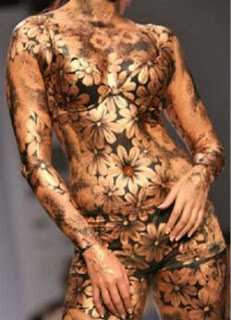, and all the other new forms of twentieth century art. Scholars and historians rarely agree, as to the exact point when modern art began. Therefore, the term generally refers to all art, produced in America and Europe, during the nineteen hundreds. In addition to a hand full of other countries, which were primarily influenced by the West. This was a time when Artists were introducing new materials, new techniques and new concepts.
It was the intention of those Artists to break free from the restraints of the 'establishment', and redefine the boundaries of art. Without doubt, one of the most important and innovative 'inventions' of twentieth century art was Cubism, and the concepts of abstraction. Pablo Picasso is considered to be, probably, the most important artist of the twentieth century. His work was highly influential, and he is regarded as the creator of Cubism.
Pablo Picasso was born in Malaga, mainland Spain. Pablo Picasso was a child prodigy, by the age of fourteen his technical skill was incredible. In 1895, his father became an art teacher at the Academy of Fine Art in La Coruña. Picasso was entered into the advanced classes quickly. He completed the entrance exam, which took most at least a month, in one day. Two years later, he began to study at the Madrid Academy. Picasso left soon after, dissatisfied, and returned home. Between 1900 and 1904, Picasso shifted between Paris and La Coruña. After four years of moving back and forth, Picasso finally made his home in Paris. This would be where he would live and work for most of his life.
From 1904, Picasso encountered many different art forms, showing great interest in the style of Henri Toulouse and African Art. Since his first visit to Paris, Picasso loved to paint the Parisian nightlife and café scenes, which generally, included a menagerie of circus performers and social outcasts. Some feel that Picasso was displaying empathy with the entertainers and outcasts he portrayed, like the Clown. The Clown is recognized inside the Big Ring, yet falls into obscurity, the second he removes his Clown face. Society pays the Clown to be entertained. Nobody is particularly interested in his real face, or feelings. Before Artists broke free of those Artistic restrictions, which had previously bound them, there was little difference between the Clown, and the Artist.
 Towards the end of 1905, Picasso's work passed through many rapid changes in style. There was a notable withdraw from emotional content. The melancholy thoughts of the outcast, was replaced by reason. Picasso began to study early century sculpture from the Iberian peninsula. His fascination with Iberian sculpture reflected his increased interest in simplified, geometric forms. Picasso's had a preference for experimentation. He also had a keen interest in Art, which lay outside the realms of the establishment. By 1907 he had produced one of the most revolutionary oil paintings of the twentieth century; Les Demoiselles d'Avignon. The influence of both his native Iberian sculpture, and African Art is paramount in this work. The painting is greatly simplified, with oval forms, the faces and figures of this painting are incongruent. This piece was extremely adventurous for 1907.
Towards the end of 1905, Picasso's work passed through many rapid changes in style. There was a notable withdraw from emotional content. The melancholy thoughts of the outcast, was replaced by reason. Picasso began to study early century sculpture from the Iberian peninsula. His fascination with Iberian sculpture reflected his increased interest in simplified, geometric forms. Picasso's had a preference for experimentation. He also had a keen interest in Art, which lay outside the realms of the establishment. By 1907 he had produced one of the most revolutionary oil paintings of the twentieth century; Les Demoiselles d'Avignon. The influence of both his native Iberian sculpture, and African Art is paramount in this work. The painting is greatly simplified, with oval forms, the faces and figures of this painting are incongruent. This piece was extremely adventurous for 1907.
The incongruities of Les Demoiselles d'Avignon proved too much for many of Picasso's contemporaries. Matisse is even believed to have accused Picasso of ridiculing the new, modern art movement. Curiously, today, many art historians and scholars regard this piece as the beginning of Cubism. The year of 1907 is also known to many as Picasso's African period. At first, Picasso rebuked the analogy of his work with African Art. However, later, he agreed that African Art had been greatly influential upon him, and his work. While some scholars believe that African Art was the primary catalyst for this rapid and drastic change in form and style, others believe it was Cézanne who provided this catalyst.
 From 1907, until around 1917, Pablo Picasso and Georges Braque developed and experimented with their new art concept, dubbed by the critics as Cubism. Most art historians and scholars will usually split that development into two dynamic stages. The first stage is referred to as Analytical Cubism. This describes the method of dissecting three dimensional forms, depicting them as multiple geometric planes. Synthetic Cubism sought to achieve the opposite. Instead of dissecting the form, they would create it using geometric planes. Picasso worked much, throughout his life, with the human figure and still life. Even today, we continue to analyze and enjoy his work. Without doubt, he was one of the most influential and innovative artists, of twentieth century modern art.
From 1907, until around 1917, Pablo Picasso and Georges Braque developed and experimented with their new art concept, dubbed by the critics as Cubism. Most art historians and scholars will usually split that development into two dynamic stages. The first stage is referred to as Analytical Cubism. This describes the method of dissecting three dimensional forms, depicting them as multiple geometric planes. Synthetic Cubism sought to achieve the opposite. Instead of dissecting the form, they would create it using geometric planes. Picasso worked much, throughout his life, with the human figure and still life. Even today, we continue to analyze and enjoy his work. Without doubt, he was one of the most influential and innovative artists, of twentieth century modern art.
































